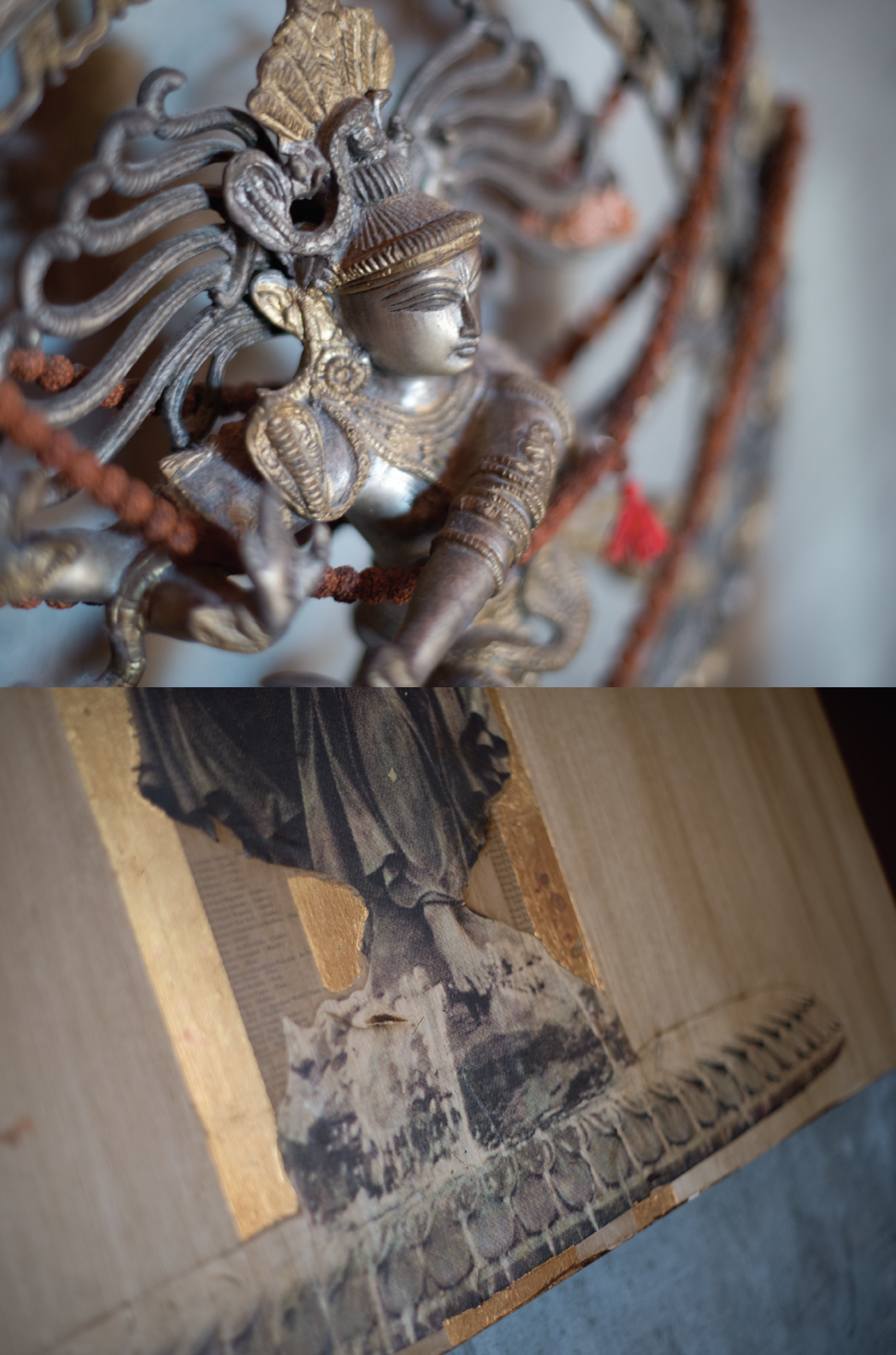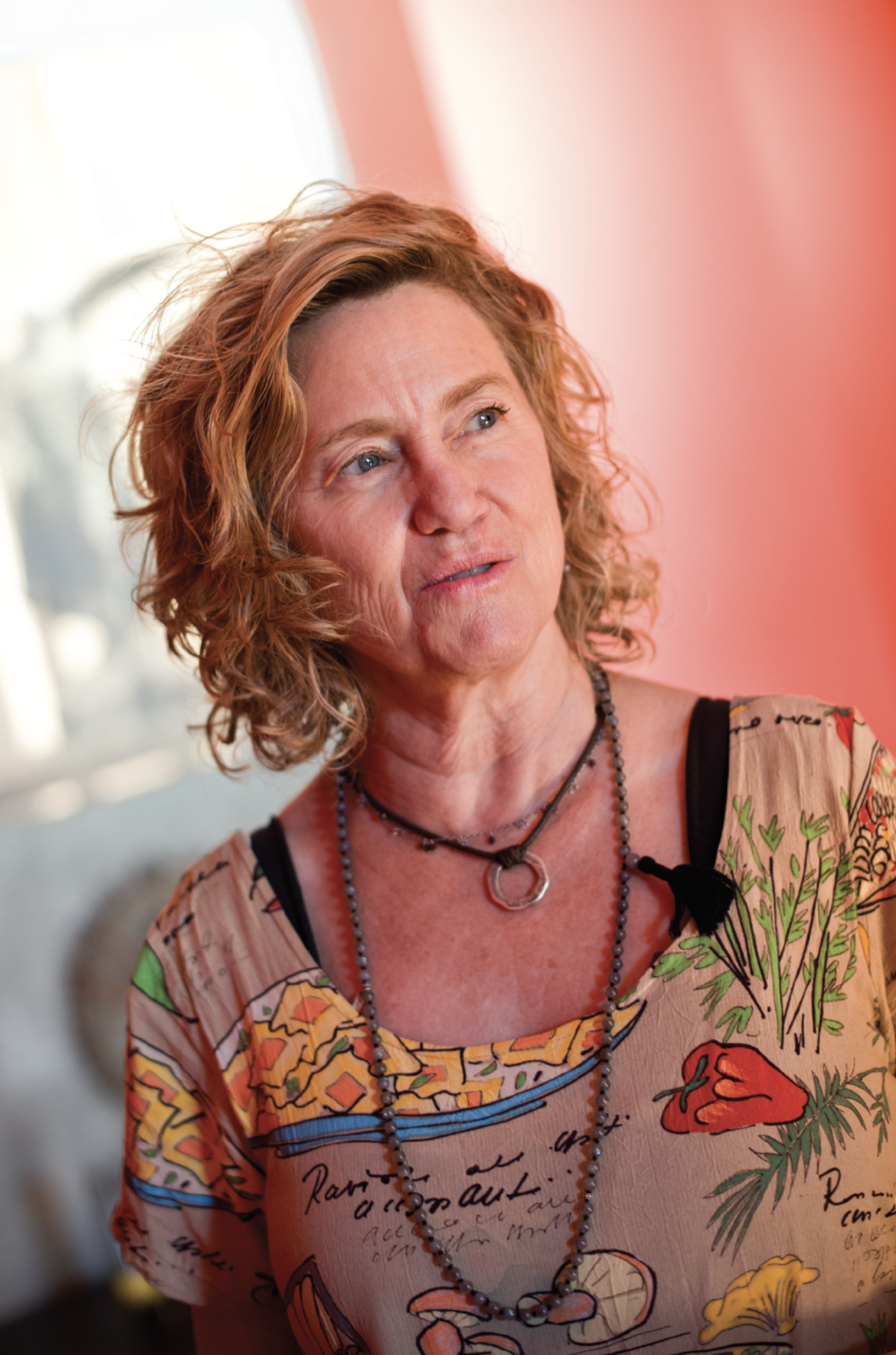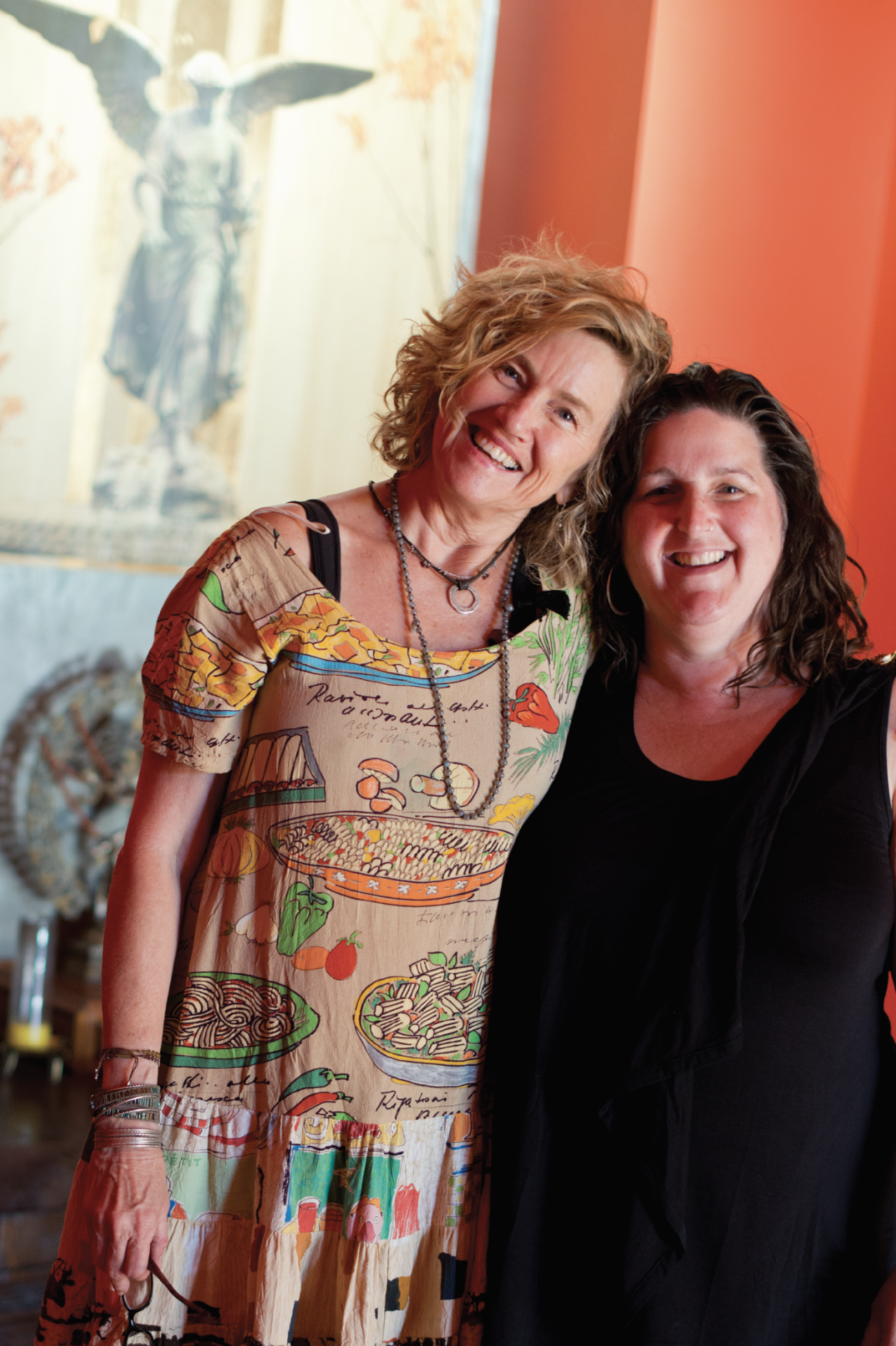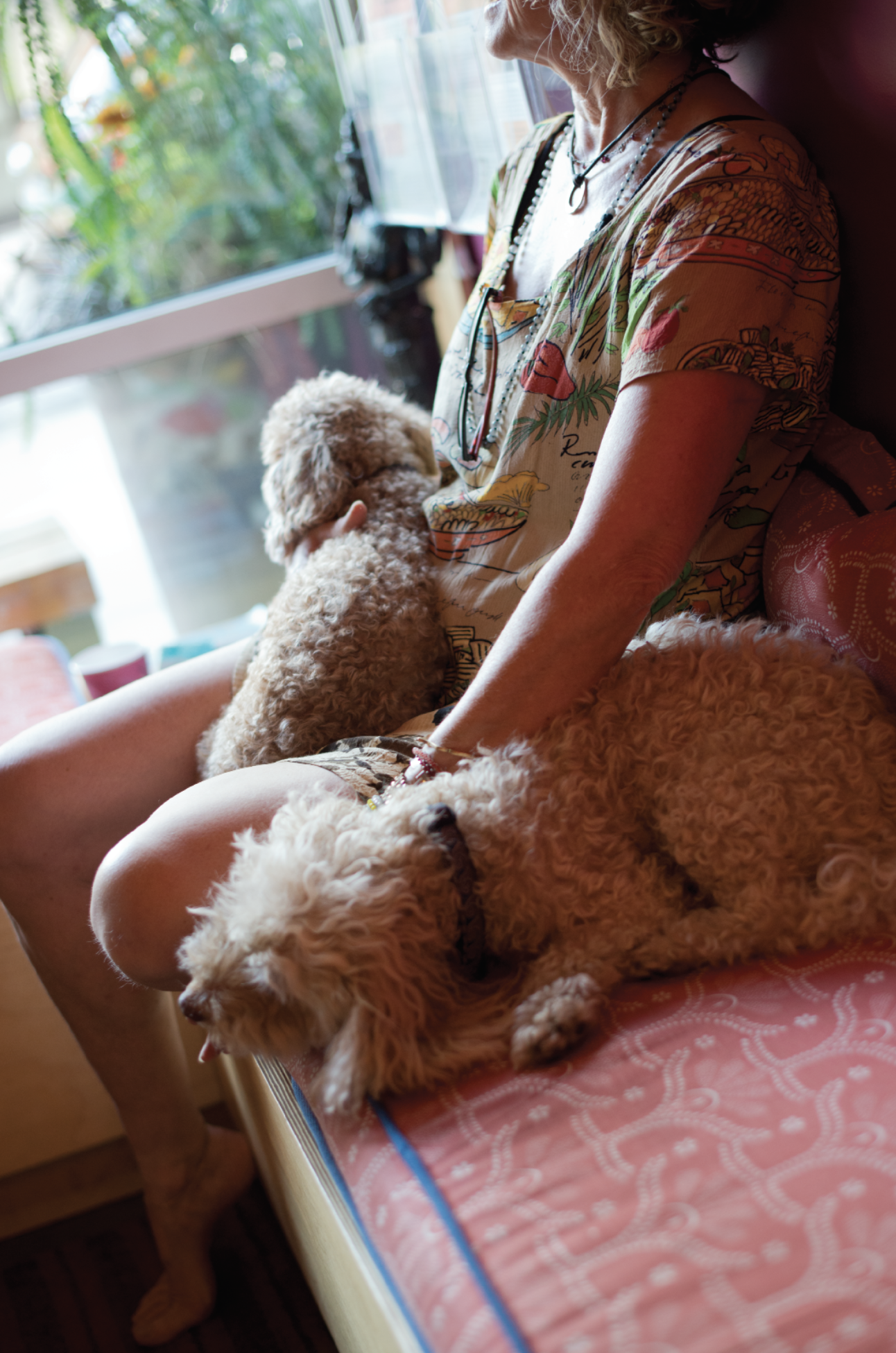Modern yoga culture offers endless images of women with perfect bodies, perfect poses and seemingly perfect lives. If yoga is about attaining perfection, where will we find sanctuary now?
By Laura Lowery
I like to tell people I practice yoga to come home, to be reminded of the power of my breath and listen to the wisdom of my body.
On days when life overwhelms and tempts me to stay home with my mental chatter, the simple, sequential acts of putting on yoga pants, turning the key in my Jeep’s ignition, singing to my parking space angels, and walking into the studio, help me remember what lies beneath the surface of my imperfect thoughts. It is divine, it is connected, it is Me with a capital M, it is my saving grace.
What I do not like to tell people is that yoga is also one way I attempt to control and shape my body. I want to sculpt and maintain a beautiful figure. By beautiful, I mean sexy, youthful, desirable, worthy—a derriere like a lululemon ad.
Yoga, for me, is both affliction and cure; pursuit of perfection and sanctuary from it.
~
The captain of my high school cheerleading squad was a model with amazing legs. I once showed a guy I had a crush on our squad photos and he pointed to her, “Who’s that girl? Great legs.” So I prayed for longer, leaner. I went running every day and bought chromium pills from the ads in the back of a teen magazine because they promised to burn fat faster. None of my efforts overcame or altered my genetics; my legs remained sturdy and short. A few years later, boot cut yoga pants came into fashion and I could hide under smooth, black lycra. They became my wardrobe staple. It didn’t matter as much to me that my legs were still not long or lean, just that now everyone else might think they were.
~
I never used to think of myself as a perfectionist.
For one thing, I am fine with mistakes. They happen. Small errors are okay with me.
For another, I practice yoga—a path to cultivate mindfulness, compassion, love, and kindness. How can I be a perfectionist if I am practicing such virtues?
That’s why when my yoga teacher, Denise Benitez, announced she’d be offering a weekend workshop on Women, Power, Perfectionism and Yoga,
“...my first thought was, “Perfectionism? I don’t identify with that.””
Denise is a yogini, a student of psychology, and the owner of Seattle Yoga Arts, one of this city’s few remaining non-power, non-heated, non-do-the-same-sun-salutations-over-and-over yoga studios. For more than thirty years, she has been a dedicated yoga teacher. “Way before it was cool,” she laughs.
I am seated on cushions with her and Bianca Raffety, who is also a yoga teacher, psychology student, and co-teacher of the workshop with Denise. We are talking about what prompted them to offer a course exploring the links between yoga and perfectionism.
“This topic has been a recurring interest and kind of a grief of mine since my twenties,” Denise explains. “I felt victimized by the images of women in the media then and I’m sad it’s still happening. It came to this kind of tension point inside myself because I just keep seeing these images that are unrealistic of women doing yoga and it’s YOGA, you know? It’s not like bathing suits.”






Modern yoga culture offers endless images of women’s bodies. Some are celebratory photographs of strong, healthy women doing yoga, but too often we see images that sexualize us or depict yoga as a path to a perfect body; especially in advertisements selling everything from yoga pants to alcohol.
We know this kind of visual persuasion is powerful. Our brains interpret what we see with our eyes as reality. It is why airbrushed photographs really do persuade us to buy makeup or face cream, even though we all know the photo is altered. We cannot help but subconsciously compare the images we see to our own reflection. It triggers our emotional brain, we feel ashamed our skin is not as smooth, so we buy the product to feel whole.
Yoga has become a multi-billion dollar industry fueled by this kind of perfectionism. Companies make a lot more money selling lycra pants than anyone is making teaching the ancient art and science of yoga and meditation. Images in advertisements carry a subliminal message: You are not perfect, but this model is and you can look like her if you buy our pants.
Can we do anything to protect our precious psyches from the effects of this kind of imagery?
“We can choose. We are not victims of the yoga perfectionism machine, but willing and powerful participants. We can decide how to interpret what we see and what we will do with it.”
“We can start by noticing where the compassion is missing,” says Bianca. “When we see an advertisement we can question, what are they trying to sell me? Then we can ask ourselves, with a lot of self-love, am I enough? Is this imagery trying to convince me on some level that I am not?”
Perfectionism in yoga goes deeper than body image. Modern yoga culture can sometimes feel like a competition to see who has attained the most enlightenment. Platitudes and quotes from famous yogis accompanied by bendy-body photographs hint that perfection is attainable, we can somehow transcend the pain of being human, and yoga is the path to get there.
“Yoga and meditation are not about getting to a place where you no longer have to feel all of these pesky emotions,” Denise gently offers. “It’s about becoming more familiar with them, not less.”
Brené Brown, Ph.D., the researcher and author of several books including The Gifts of Imperfection, describes perfectionism as a self-destructive and addictive belief system that fuels this primary thought: If I look perfect and do everything perfectly, I can avoid or minimize the painful feelings of shame, judgment and blame.
“The opposite of perfectionism is vulnerability and that’s what we run away from,” says Denise.
““One of the biggest things I’ve gotten out of being in therapy school is the recognition that life is really messy and it’s not supposed to be organized. It never is. It’s like permanent white water.””
We try to avoid the rapids by clinging to the belief that if we create the right image of ourselves, we will never get thrown from our raft.
Denise points out that social media adds to the illusion that perfection is attainable.
“When you look at Facebook, you’re looking at everybody’s peak moments and you’re sitting there in your pajamas at ten o’clock having not taken a shower yet. It fuels the perfectionism machine because wow, look, they have the perfect family! Wow, look, that’s a perfect body! Wow, look, her yoga pose is perfect!”
“There is all this cleansing we do of our messiness on social media,” Bianca adds.
““By striving for perfection, we edit the messiness of life, which is what in many ways a truly deep and deeply-lived experience requires.””
On Sunday, I put on my black lycra pants and go to yoga. A warm buzz fills the room as dozens of human beings of all ages acknowledge one another with friendly good mornings.
Denise guides us through poses and her words draw poetic parallels between the effort we exert in our bodies and the control we try to have over life’s circumstances.
Perhaps it is her voice, or the energy of so many bodies moving together, but I feel a hardness in me relax and soften.
I stand on one leg in half moon pose with my torso floating parallel to the floor. My right fingertips reach down to meet the mat while my left fingertips and leg reach for the sky. My right leg is the only thing holding me up. An emotion flows through me and for one watery-eyed moment I decide—I choose—to love my legs just as they are: sweet, strong, imperfect, beautiful.


